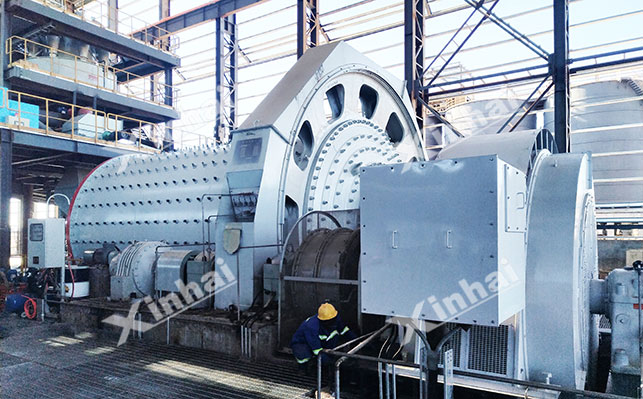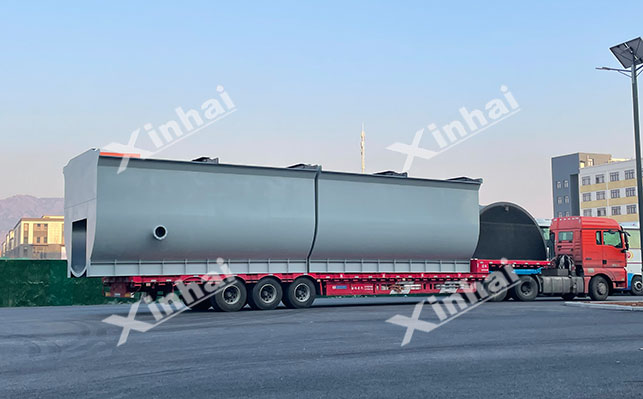
15311826613
Click to add WeChatLithium carbonate is a white monoclinic crystal. In terms of chemical properties, lithium carbonate can react with acid to form corresponding lithium salts, can react with carbon dioxide to form acid carbonate, and can be decomposed into lithium oxide and carbon dioxide at high temperature. So what are the types of lithium carbonate ores? What are the processes, equipment and extraction methods of lithium carbonate beneficiation? This article will introduce lithium carbonate beneficiation from these four dimensions.
According to the occurrence state and properties of minerals, lithium carbonate ores can be mainly divided into two categories: hard rock type (spodumene and lepidolite) and salt lake brine type.
Spodumene: The crystal structure is a monoclinic system, often coexisting with minerals such as quartz, feldspar, and mica. Its lithium content is generally 1.0%-1.8%, and the color is diverse, commonly grayish white and light green, and high-quality spodumene is lavender (purple spodumene). The global spodumene mines are mainly distributed in Australia, Brazil, Canada and other places. Sichuan Jijiaka and Xinjiang Keketuohai in my country are important spodumene producing areas.
Lepidolite: It is a layered silicate mineral with a lithium content of 0.5%-3.5%, and often contains rare metals such as rubidium and cesium. Lepidolite is rose-colored or light purple, and the aggregates are flaky or scaly, often coexisting with minerals such as feldspar, quartz, and cassiterite. It is mainly distributed in North Carolina, Zimbabwe, and Yichun, Jiangxi, my country.
Lithium extraction from salt lake brine: The lithium in salt lake brine exists in the form of lithium ions and is another important source of lithium carbonate. The global salt lake lithium resources are mainly concentrated in the "lithium triangle" region (the border area between Chile, Argentina, and Bolivia) and the salt lakes in Qinghai and Tibet in my country. Compared with lithium extraction from ore, lithium extraction from salt lake brine has the advantages of low cost and low energy consumption, but there are challenges such as difficulty in separating magnesium and lithium and long development cycle.
The process of lithium carbonate ore beneficiation usually includes pretreatment, sorting and concentrate treatment.

Crushing and screening: This stage mostly adopts a three-stage crushing process, with a jaw crusher for coarse crushing, and the particle size is controlled at 50-100mm; a cone crusher or impact crusher for medium crushing, and the particle size is crushed to 10-25mm; a cone crusher or roller crusher is used for fine crushing, and the ore particle size reaches 5-10mm. In the process, the screening machine is used to return the unqualified particle sizes at each level to the previous level for crushing, and the qualified particle sizes enter the next stage for grinding.
Grinding: It is mainly to further grind the crushed product to make the mineral reach a fully dissociated state. Usually, a ball mill is used in combination with a cyclone or spiral classifier to complete the grinding operation. Sometimes, depending on the ore conditions, a rod mill is used to complete the grinding. The final grinding particle size range is controlled at -0.074mm, accounting for 60%-80%.
Gravity separation method: mainly used as a pre-selection process to remove the gangue in the mineral in advance to reduce the pressure of subsequent flotation operations. Gravity separation mainly uses the density difference between lithium minerals and gangue minerals for separation. Commonly used equipment includes spiral chutes and shaking tables.
Flotation method: a one-roughing, multiple-fine, multiple-sweeping process is often used. First, the lithium ore is quickly enriched by roughing to obtain lithium rough concentrate, and then the grade of lithium concentrate is further improved through multiple fines; sweeping is used to recover lithium from the rough tailings to improve the lithium recovery rate. In the process, fatty acid collectors or amine collectors are often used to change the chemical reaction of metal ions on the surface of lithium minerals to form hydrophobic complexes; amine collectors achieve the capture of lithium minerals through electrostatic adsorption and hydrogen bonding; sodium carbonate is often used as an adjuster to adjust the pH value of the slurry to alkaline (pH=8-10) to enhance the selectivity of the collector; water glass inhibits the floating of gangue minerals, and finally achieves effective flotation of minerals.
Magnetic separation: This method is mainly aimed at removing magnetic ores (containing titanium, manganese, etc.) from lithium minerals, and is usually separated by high gradient magnetic separators or strong magnetic separators.
After separation, the concentrate will contain a lot of water, and it is necessary to reduce the water content by dehydration to facilitate subsequent processing. Generally, the process of concentration + filtration + drying is commonly used. The concentrator increases the pulp concentration from 15%-30% to 40%-60%; the filter further concentrates it to reduce its water content to 15% - 20%; the drying uses rotary kilns, flash dryers and other equipment to reduce the water content of lithium concentrate to less than 5%, meeting the requirements of subsequent extraction processes.
In addition to the crusher, ball mill, magnetic separation and gravity separation equipment mentioned above, the main lithium carbonate beneficiation equipment is flotation equipment and reagent stirring tank.

Mechanical stirring flotation machine: The rotation of the impeller produces stirring and aeration, so that the slurry is fully mixed and bubbles are generated. The stirring action of the impeller helps the reagent to fully contact the mineral surface and realize the flotation of the mineral. The equipment is suitable for the flotation of various minerals and has strong adaptability to lithium ores of different properties. It is often used for roughing, concentrating and scavenging operations in lithium carbonate beneficiation, and can effectively enrich lithium minerals.
Aerated flotation machine: adopts external air supply, and fills air into the slurry through a special aeration device to form a large number of tiny bubbles. Compared with mechanical stirring flotation machines, aerated flotation machines have large aeration volume and low energy consumption. They are especially suitable for large-scale production in large beneficiation plants, and can improve flotation efficiency and the recovery rate of lithium minerals.
Lithium carbonate extraction is the process of extracting and purifying lithium from the selected concentrate. The methods usually include sulfuric acid method, lime sintering method, precipitation method, adsorption method and membrane separation method.
Sulfuric acid method: multi-process spodumene, roast spodumene at 1000-1200℃, so that its crystal form changes from α type to β type, and the lithium leaching rate is improved. After roasting, the product is mixed with sulfuric acid and reacted at 250-300℃ to convert lithium into lithium sulfate and enter the solution. After neutralization, impurity removal, evaporation and crystallization, lithium carbonate products are obtained.
Lime sintering method: more processing of lithium mica, mixing lithium mica with lime in a certain proportion, sintering at 800-900℃, so that lithium is converted into soluble lithium salt. After the sintered material is soaked in water, filtered and impurities are removed, sodium carbonate is added to the solution to precipitate lithium carbonate.
Precipitation method: used for lithium extraction from brine, sodium carbonate, sodium bicarbonate and other precipitants are added to the brine to convert lithium ions into lithium carbonate precipitation, which is suitable for brine with a low magnesium-lithium ratio.
Adsorption method: used for lithium extraction from brine, ion exchange resin or adsorbent is used to selectively adsorb lithium ions, and then lithium-rich solution is obtained by elution, and lithium carbonate products are obtained after impurity removal and precipitation.
Membrane separation method: used for lithium extraction from brine, nanofiltration membrane, reverse osmosis membrane, etc. are used to separate lithium ions from other ions.
Lithium carbonate beneficiation and extraction technology is a complex system engineering. In terms of beneficiation technology, flotation is the key technology for lithium ore beneficiation. Through reasonable reagent system and process design, efficient enrichment of lithium minerals can be achieved; sulfuric acid method and lime sintering method are the main methods for extracting lithium from ore. Due to the difference in cost and the nature of the ore itself, the beneficiation methods are also different. Choosing a suitable process is the key. Therefore, it is recommended to conduct beneficiation tests on the ore first, and design a suitable process plan through analysis.